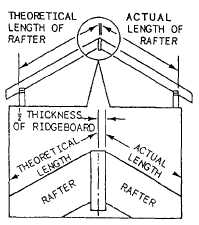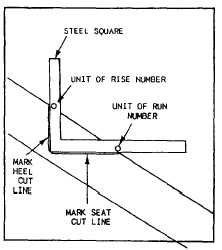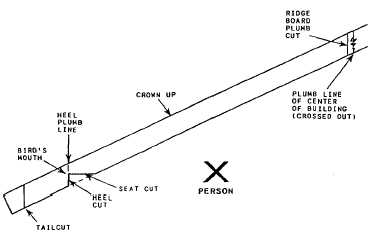Figure 2-18.—The actual (versus theoretical) length of a common
rafter.
Figure 2-19.-Steel square used to lay out plumb and seat cuts.
SHORTENING.— Rafter length found by any of
the methods discussed here is the measurement from the
heel plumb line to the center of the ridge. This is known
as the theoretical length of the rafter. Since a ridgeboard,
usually 1 1/2 inches thick, is placed between the rafters,
one-half of the ridgeboard (3/4 inch) must be deducted
from each rafter. This calculation is known as shortening
the rafter. It is done at the time the rafters are laid out.
The actual length (as opposed to the theoretical length)
of a ratler is the distance from the heel plumb line to the
shortened ridge plumb line (fig. 2-18).
LAYING OUT.— Before the rafters can be cut, the
angles of the cuts must be marked. Layout consists of
marking the plumb cuts at the ridge, heel, and tail of the
rafter, and the seat cut where the rafter will rest on the
wall. The angles are laid out with a framing square, as
shown in figure 2-19. A pair of square gauges is useful
in the procedure. One square gauge is secured to the
tongue of the square next to the number that is the same
as the unit of rise. The other gauge is secured to the blade
of the square next to the number that is the same as the
unit of run (always 12 inches). When the square is placed
on the rafter stock, the plumb cut can be marked along
the tongue (unit of rise) side of the square. The seat cut
can be marked along the blade (unit of run) side of the
square.
Rafter layout also includes marking off the required
overhang, or tail line length, and making the shortening
calculation explained earlier. Overhang, or tail line
length, is rarely given and must be calculated before
laying out rafters. Projection, the horizontal distance
from the building line to the rafter tail, must be located
from drawings or specifications. To determine tail line
length, use the following formula: bridge measure (in
inches) times projection (in feet) equals tail line length
(in inches). Determine the bridge measure by using the
rafter table on the framing square or calculate it by using
the Pythagorean theorem. Using figure 2-20 as a guide,
you can see there are four basic steps remaining.
Figure 2-20.—Laying out a common rafter for a gable roof.
2-13





